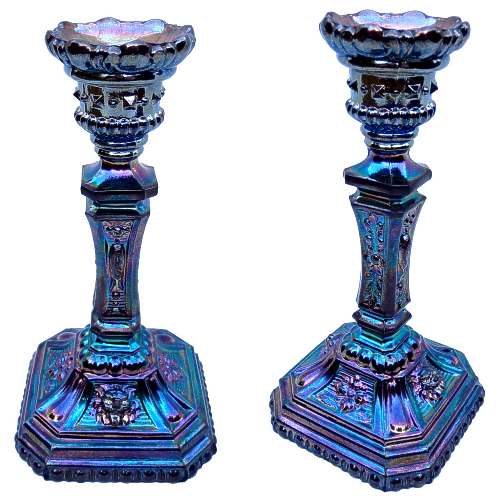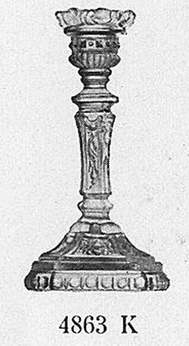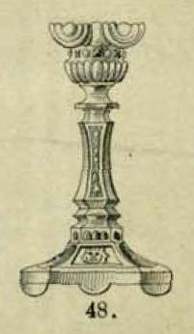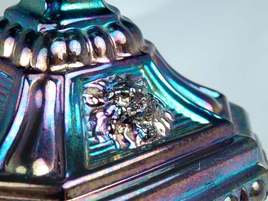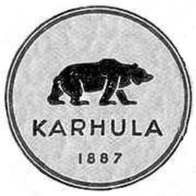Collectors Facts - Ornate Beads, Karhula
|
Shapes:
Candlestick
|
Colours:
Marigold; blue
|
|
These candlesticks have a magnificent electric blue iridescence.
Standing 6.5 inches high on a 3 inch square base, they feature a most intriguing moulded design. They are illustrated in the 1922 and 1934 Karhula catalogues, but were only given a number (4863), not a name. Whoever subsequently named them “Ornate Beads” probably did not get to study them at close quarters: Although there are beads in the pattern around the base and the top of the candle holder, the animal head motif (which is repeated twice around the base) has far greater interest - see detailed picture, right. Is it a lion perhaps, or could it be a bear? It appears to have a snout like a bear, although it also has a mane (which could of course be the bear’s rough fur). Our first thoughts when we originally saw photos of these candlesticks was that the creature was indeed a lion. But now that we have the actual items to study “in the flesh” we are not so sure. We think a bear is more likely - explained by their history and the connection with the Russian firm of Dyatkovo. A similar candlestick appears in a 1903 Dyatkovo catalogue, as shown above - the bottom of the pedestal is slightly different as it doesn’t have the beading. It is possible that the mould went from Dyatkovo in Russia, to Karhula in neighbouring Finland where it was altered to add the lower beading – or possibly Dyatkovo themselves made a (slightly altered) mould for the Finnish factory. Whatever the case, the original Russian source is clear. It’s fair to say that lions are not too prevalent in Russia, whereas the bear is a well-known Russian icon and motif. As if to underline that, the name Karhu means “bear” and the Karhula logo (shown on the right) is exactly that – a bear! On the other hand, it’s always possible that the designer was attempting to emulate the lion-head prunts seen on some glass. See more Collectors Facts |
